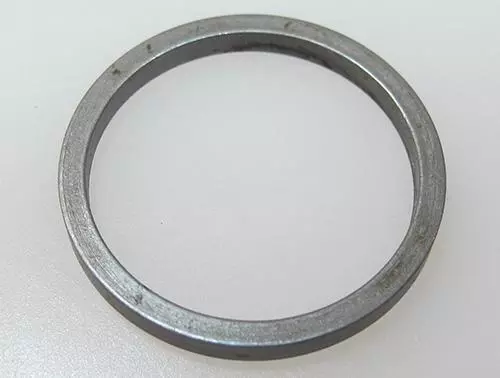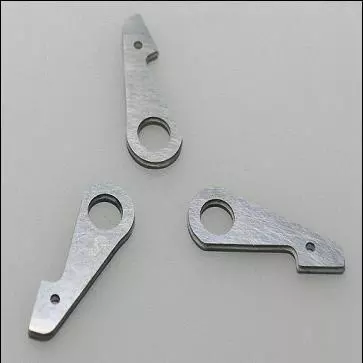Lapping Shims - Case Study
Test Requirements: Lap adjusting Shims to required tolerances
Machine Type: Kemet 15” diamond lapping/polishing machine
Lapping Process for Shims
Both the Kemet iron plate and the hand weight used were lapped flat before lapping. The parts were measured and recorded before lapping. An average of 400 microns had to be removed to bring the parts into the required size tolerance.
10 Parts were then carefully placed inside a fixture designed to evenly spread the pressure of the hand weight keeping the parts as parallel as possible. The parts were lapped initially for 30 minutes to bring the parts into size, a coarser diamond would remove stock faster shortening the process time.
Once the parts were near the required size tolerances the parts were re measured then lapped for 5 minutes on each side. This short lapping time on each face removes any resulting high spots and improves the parallelism. It is not possible to lap one face to clean up, and then remove all the material from the other face because this will not show an improvement in parallelism.
Before Lapping Shims

After Lapping Shims

Test Requirements: To lap steel shims to size ranges
Component: Steel shims
Machine Type: Kemet 15” diamond lapping/polishing machine
Lap Plate: Kemet XP
Abrasive Type/Grade: 6 micron Type K Standard Diamond Slurries
| Process Breakdown | ||
|---|---|---|
| Stage | Plate/cloth type | Abrasive type/grade |
| Lapping | Kemet XP | 6µ Type K Standard Concentration |
Process for Lapping Steel Shims
The process times and stock removal rates are specific to the number of components and pressure applied per ring during this test. However, we have shown that the stock removal rate for this process is consistent over time, and suitable for this application. For this test we have used a non-slip material to fix the components to our hand weight, but would recommend in production a nest be used to keep the components in place, with a hand weight directly on top applying lapping pressure. 3 short 5-minute runs established the stock removal rate, with a subsequent 15-minute run to bring the components down to the next shim size. The components are enclosed for evaluation.
Before Lapping Steel Shims

After Lapping Steel Shims

